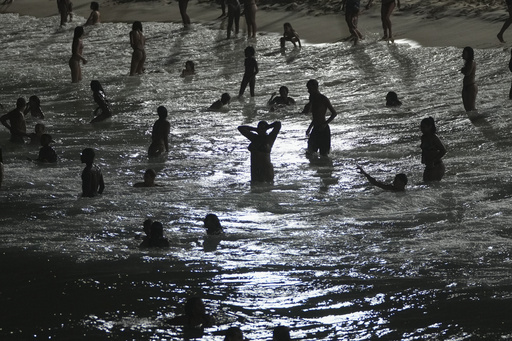
VIÑA DEL MAR, Chile — On a sweltering summer day in Chile, the beaches of Viña del Mar, Concón, and Reñaca are bustling with vacationers drinking yerba mate and enjoying sports. Meanwhile, others are seen shopping in nearby coastal malls and in the capital, many of whom are sporting Lionel Messi jerseys and carrying bags filled with clothing, video games, and smartphones.
A significant number of Argentines have discovered Chile as an affordable getaway, making the most of their summer holidays.
Cristian Vázquez, relaxing by the sea in Reñaca, expressed his delight, stating, “Everything here is so cheap for us.”
In December 2024, during the onset of summer in the Southern Hemisphere, there was a noticeable increase in Argentine travelers heading abroad compared to the previous year, with favored destinations being Chile, Brazil, and Uruguay.
Despite facing economic challenges, Argentines are eagerly visiting beaches, mountainous regions, and shopping centers outside their country, motivated by a positive economic forecast and the strengthened peso.
From December 2023 to December 2024, the Argentine peso saw a rise of approximately 41% against the official U.S. dollar, partly attributed to a robust adjustment initiative led by President Javier Milei, an ultra-liberal leader who assumed office in late 2023. His goals include dismantling the central bank and addressing rampant inflation through stringent government cuts.
Chile has emerged as a favored destination for Argentine travelers, driven by the recent devaluation of foreign currencies and relatively low domestic vacation costs, especially along Argentina’s costly Atlantic coast.
According to official reports, tourism abroad from Argentina soared in December, with departures increasing by 76.4% year-on-year, totaling around 1.3 million travelers. Over 80% of these travelers chose neighboring countries, with Chile accounting for 28% of visits, followed by Brazil at 22.6% and Uruguay at 15.6%.
In 2024 and early 2025, Argentines represented 40% of the 5.2 million tourists visiting Chile. The economic disparity between Chile and Argentina offers competitive pricing, making it particularly attractive for Argentine visitors.
Verónica Pardo, Chile’s tourism undersecretary, noted that tourists are also spending more than in past years, with an average expenditure of approximately $63.3 per person per day.
Argentines aren’t limiting their vacations to the picturesque Chilean beaches. Messi jerseys and mate containers are visible in other neighboring nations.
Nicolás Lentini, who recently explored Brazil, was enticed by the devalued Brazilian real and resulting lower prices. He mentioned that a week’s rent for four back in Argentina costs around $700, while he managed to rent accommodations for 14 days in Búzios, a resort town near Rio de Janeiro, for the same price.
“Moreover, the beaches here are incomparable to ours, where it’s cold. Here, you can wear T-shirts all day,” he said enthusiastically.
Brazil has witnessed a spike in tourism following a 27% depreciation of the real in 2024, with foreign arrivals hitting a record 6.6 million, among which Argentines numbered 1.9 million.
Andrés Deyá, representing Argentina’s travel and tourism business associations, remarked on the difficulties faced in competing with nearby countries like Brazil. He emphasized that while quality service and competitive financing are strengths, broader economic factors ultimately influence Argentine travel choices.
After a four-year break due to the COVID-19 pandemic and subsequent economic downturn, Luis Sánchez returned to the upscale Punta del Este resort in Uruguay. “We really enjoy it… this year the prices aren’t as steep as before,” he indicated, having joined 309,570 other Argentines visiting Uruguay during the busy holiday season, accounting for nearly half of all tourists to the nation. In 2024, the U.S. dollar appreciated nearly 13% against the Uruguayan peso compared to 2023.
Tourism professionals in Argentina highlight that the recent surge in travel is also due to rising purchasing power linked to declining inflation and the recent removal of a tax on foreign credit card use.
While sunbathing in Punta del Este, Esperanza Fagalde shared that she hadn’t vacationed in the resort for two years due to financial constraints. “It just wasn’t affordable,” she said, citing the unfavorable exchange rate and high prices.
“But now it is, so we’re back,” she noted, reflecting the changing economic landscape.

